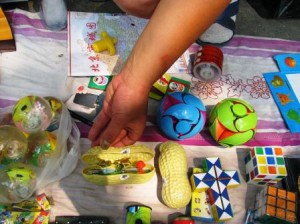Literally, I mean. In China, the peanut (huasheng 花生) is an auspicious symbol because its second character (sheng 生) means “to give birth.” That’s why you can buy cute plastic peanut-shaped toys which open to play a jingle.

Agricultural Biodiversity Weblog
Agrobiodiversity is crops, livestock, foodways, microbes, pollinators, wild relatives …
Literally, I mean. In China, the peanut (huasheng 花生) is an auspicious symbol because its second character (sheng 生) means “to give birth.” That’s why you can buy cute plastic peanut-shaped toys which open to play a jingle.

We blogged before about the BBC’s A History of the World in 100 Objects. But that was some months ago and there’s a whole bunch more programmes on agriculture-related objects in the can now. Well worth a listen.